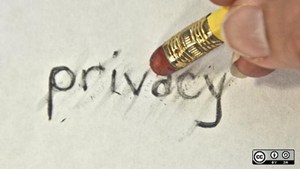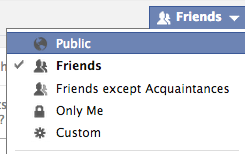20 Sep Simple Tips to Protect Your Privacy Online
You’ve probably heard blanket statements about protecting your privacy online, and you probably agree that it’s important. Do you know why it is important to protect your privacy online?
The Facts:
Internet usage in the United States:
- 76% of the total U.S. population is online. (Hubspot)
- 56% of Americans have a profile on a social networking site. (Hubspot)
Online privacy settings usage:
- 15% of Americans have never checked their social networking privacy and security account settings. (National Cyber Security Alliance -MacAfee Online Safety Study, 2011)
- Almost 13 million users say they have never set, or don’t know about Facebook’s privacy setting tools. (Consumer Reports)
Real Life Examples:
- A year ago, reports surfaced that demonstrated that hackers could guess your social security number if you share too much personal information online.
- Last month Fast Company broke a story about how some fake social network profiles, also known as bots, use real photos of real people without their permission.
- A few weeks ago when we drafted our blog post about iPhone applications for PR pros, we noted that nearly every app asked for permission to access our personal Facebook data.
- For a few years, robbery rings have been trolling social networks to determine who is on vacation so they can break into their homes.
Protect Yourself.
There are some simple steps you can take to protect your identity online.
Don’t share all of your personal information.
Skilled hackers can scour the web and piecemeal information together to tell your complete story. As noted above, they can even guess your social security number. To protect yourself, never share the following information on a public-facing website.
- Your mother’s maiden name
- Your social security number
- Your birthplace
- Anything related to any security question online such as your first pet’s name or your elementary school
You should also be careful where you share your main email address and your phone number. Hackers can mine those for information too.
Understand that the default setting on social media sites is public.
Social networking inherently public facing, but that may not mean that you want all of your information to be publically available. Be aware, the default setting on social media sites is public. Don’t share anything private until you’ve verified your privacy settings under your account information.
Quick Tip: Facebook
As you download new applications, be aware that many of them will ask to access your Facebook data. If you don’t want all of your friends seeing your activity, set your privacy settings accordingly. When the new application asks “who can see posts from this app,” choose “only me.”
Quick Tip: LinkedIn
LinkedIn is the only social network that enables users to see who has viewed their profile. Do you want to browse freely, without anyone knowing you viewed their page?
- Go to your profile
- Select your name in the upper right-hand corner
- Select settings
- Choose “Select what others see when you’ve viewed their profile”
- You’ll then be able to choose anonymity
Create unique passwords for each network.
Passwords aren’t fun to create, but it is important that they are both strong and unique. If you are hacked on one account, you don’t want to open the doors to hackers on others. Use this helpful primer to create great passwords and then use a service like LastPass to help you securely remember all of your passwords.
Don’t forget to set a password for your mobile phone just incase it is stolen too.
Hover over URLs before you click on them.
This tip sounds technical, but it’s based in common sense. To avoid clicking on a malicious URL that collects collect sensitive data or infects your computer with a virus, examine each link. Before you click on a link, hover over it with your mouse and read the full URL. This URL will most often pop up on the lower left-hand side of your browser window or in a pop-up fashion right in front of you. Malicious URLs are usually easy to spot, as the root of the link won’t be recognizable.
Example:
- A link to BRG’s about page looks like this: https://brgcommunications.com/about-us/
- A malicious URL might look like this: http://www.fakecomanyx/brgcommunications/about-us/
Be careful when you share your location.
Status updates: Are you on a business trip or on vacation? You might not want to share that on Facebook or LinkedIn. Crime rings are using social networks to target and break into empty houses.
Basic account settings: If you don’t want people to know where you are, make sure you disable your location settings. Twitter and Facebook, for example, can share your location publicly unless your location privacy setting is set to private.
What privacy tips do you have? Tweet us @BRGLiving and let us know!
Photo credit: opensourceway via photo pin cc








